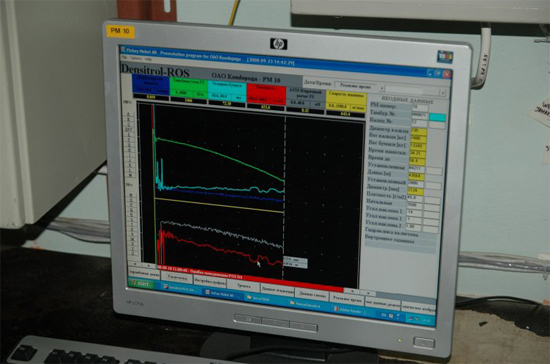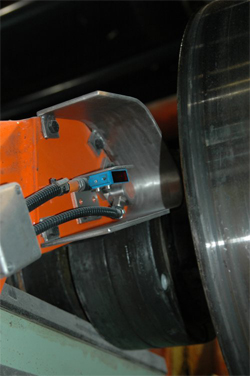Several centimeters of paper left on a parent reel spool is a common sight in many paper mills. These left-on-spool or bottom waste losses, which cannot be wound because of tension control problems and crepe wrinkles during the initial phases of reel building, may add up to several percentage points of lost production. Many wrinkles and breaks in the winders and supercalenders are attributed to uneven density and web tension near the reel spool. Papermakers do what is natural by overbuilding a jumbo reel with extra paper which eventually ends up in the broke pit.
Vishay Nobel AB of Karlskoga, Sweden has come up with a solution to this chronic waste problem by introducing its Reel Optimization Control System (ROS) to the paper industry. Developed several years ago at mills in Sweden, the product is being commissioned on machines with older pneumatic reeling systems which are often imprecise and lack the feedback of actual reel building conditions and reel density.
Vishay Nobel converts the old pneumatic systems to hydraulic control systems so the primary and secondary arms are controlled and coordinated more precisely and repeatably for smoother operation, even sheet tension and more uniform reel building during the entire reeling cycle. In particular, the primary to secondary arm transfer is controlled so uneven sheet stresses are avoided. The primary arms, primary arm hooks, relief cylinders and secondary arms are equipped on the tending side and on the drive side with Vishay Nobel load cell sensors to measure nip pressure between the reel and the drum. The positioning of the hydraulic actuators is measured with transducers for precise feedback control. The entire reeling operation is supervised by operators through a video terminal interface.
Vishay Nobel’s customers report excellent results with much lower reel spool waste, higher production and other operating benefits. These typical results are confirmed by the following mills:
• Stora Enso Kvarnsveden, Sweden, which produces improved newsprint and magazine papers. Three ROS systems have solved the previous reel density control problems and have allowed the machines to produce jumbo reels with the right density profile without encountering winder runnability problems on the bottom sets with sheets containing up to 15% filler. The mill can now produce jumbo reels with a full complement of sets with a minimum of left-on-spool losses.
• OAO Kondopoga, Karelia, Russia. Five ROS systems have been installed on the mill’s newsprint machines. Bottom waste has been reduced significantly, adding to saleable production. On one machine production was increased by 7 tons/day. At the same time, reel snap-off breaks have been reduced or eliminated and the consistency of winding density and wound roll sheet area yield has been improved.
• Cartiere Burgo, Verzuolo, Italy. A new reel supplied by Comecart in Cuneo, Italy was supplied with a factory-installed ROS on the off-machine coater of PM8 line. The product is light-weight coated paper. With more uniform paper density at the reel spool, the losses reported by the supercalender operators have been cut dramatically - by over 70%. Since wrinkling in the supercalenders has been eliminated the throughput has been increased . The line operating efficiency is up 2 per cent and finished production has increased by about 10 tonnes per day.

The real-time progress of the reel density optimization controls is shown to the operators on a control room video monitor. The system also reports reel length and diameter so the operators can build the reel to the needed dimensions to suit the winders’ set production requirements.

An optical sensor (blue) measures reel bar rotation speed. A Vishay Nobel load cell sensor mounted behind it measures nip pressure applied by the secondary arms.
For more info please contact:
Ståle Hamnvik
Director, Nobel
Nobel Weighing Systems
Phone: +47 22 88 40 90
Mobile: +47 900 90 454
www.weighingsolutions.com
